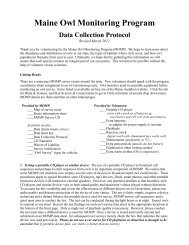Focus Species Forestry - Maine Audubon
Focus Species Forestry - Maine Audubon
Focus Species Forestry - Maine Audubon
Create successful ePaper yourself
Turn your PDF publications into a flip-book with our unique Google optimized e-Paper software.
6. <strong>Focus</strong> <strong>Species</strong> Profiles and Management<br />
Recommendations<br />
The following pages include range, habitat, and management information for each focus species.<br />
Following is a guide to interpreting and using the management profiles.<br />
<strong>Maine</strong> <strong>Focus</strong> Region: Because species vary in their<br />
abundance across the state, some species are not<br />
focus species for the entire state. Figure 1 shows<br />
<strong>Maine</strong>’s focus species habitat regions. The North<br />
Region largely corresponds with the area where<br />
extensive spruce-fir forests are found. The South<br />
Region is associated with the approximate northern<br />
and eastern limit of red oak as a significant forest<br />
component (Allen and Plantinga 1999) and by the<br />
southern limit of American marten.<br />
Figure 1. <strong>Focus</strong> <strong>Species</strong> Regions<br />
Home Range: Home range is the area typically used<br />
by an animal over the course of a year. In cases where<br />
males and females have different home ranges, the<br />
larger value is given. Home ranges between individual<br />
animals often overlap. At the landscape or regional<br />
level a viable population may require the area<br />
equivalent to many home ranges.<br />
Territory: Territory refers to the area that a pair of<br />
songbirds actively defends during the nesting season.<br />
While the area defended by a single pair of birds may<br />
be very small, the species may most likely to be found<br />
in large forest patches. For example, the wood thrush<br />
has a territory ranging from 0.2-7 acres, but data from<br />
the northern forest region show that it is most<br />
abundant in forest patches that exceed 200 acres.<br />
Management: This section includes specific management recommendations for each focus<br />
species. These recommendations should be used in conjunction with the management<br />
recommendations in the habitat management guides and the guides to stand and landscape-scale<br />
management (Sections 7 and 8).<br />
<strong>Focus</strong> <strong>Species</strong> <strong>Forestry</strong> 35


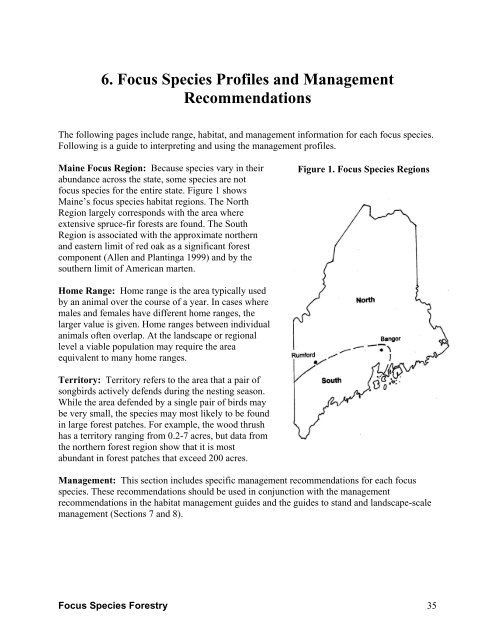
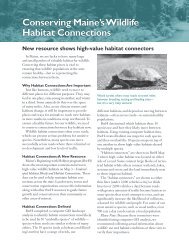
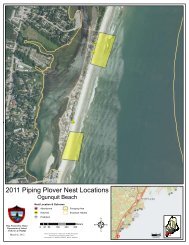
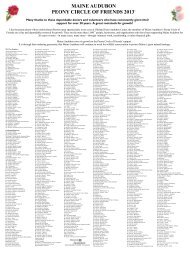
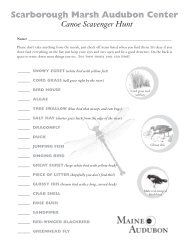


![2012 Loon Count Results [pdf] - Maine Audubon](https://img.yumpu.com/26228732/1/190x245/2012-loon-count-results-pdf-maine-audubon.jpg?quality=85)
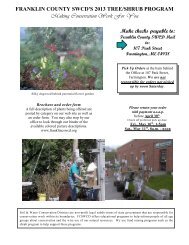
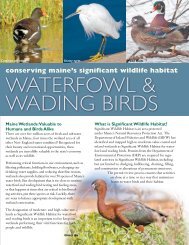
![Lake Fish of Maine (DIFW list) [pdf] - Maine Audubon](https://img.yumpu.com/23282964/1/190x245/lake-fish-of-maine-difw-list-pdf-maine-audubon.jpg?quality=85)
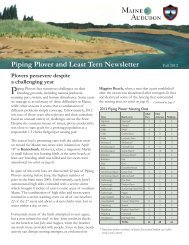

![The Maine Audubon Peony Circle of Friends 2012 [pdf]](https://img.yumpu.com/22707677/1/190x253/the-maine-audubon-peony-circle-of-friends-2012-pdf.jpg?quality=85)
